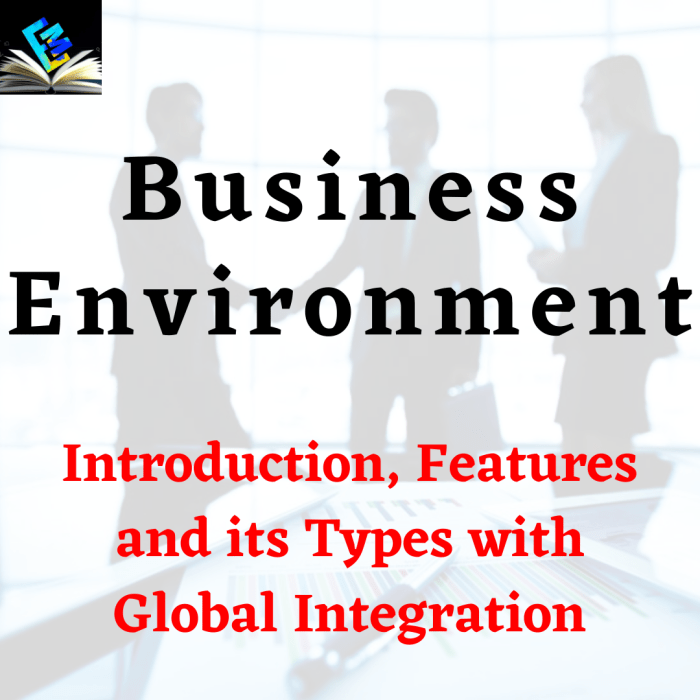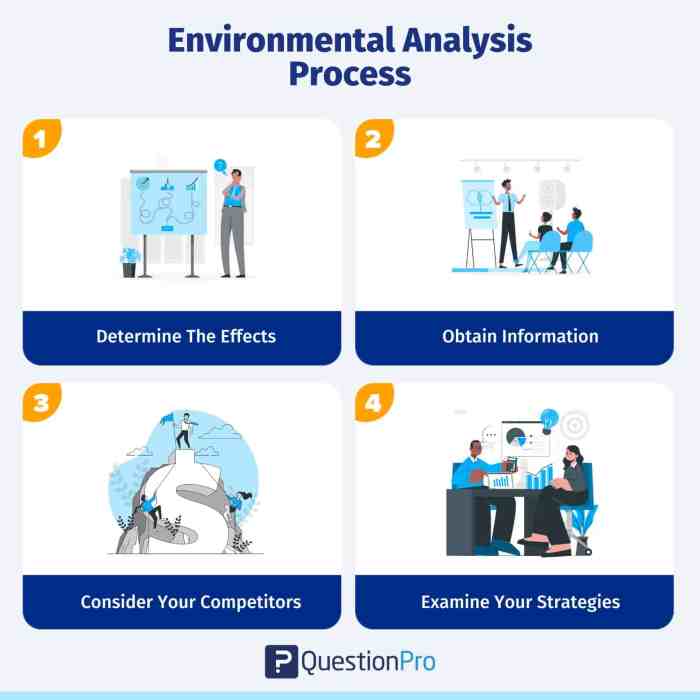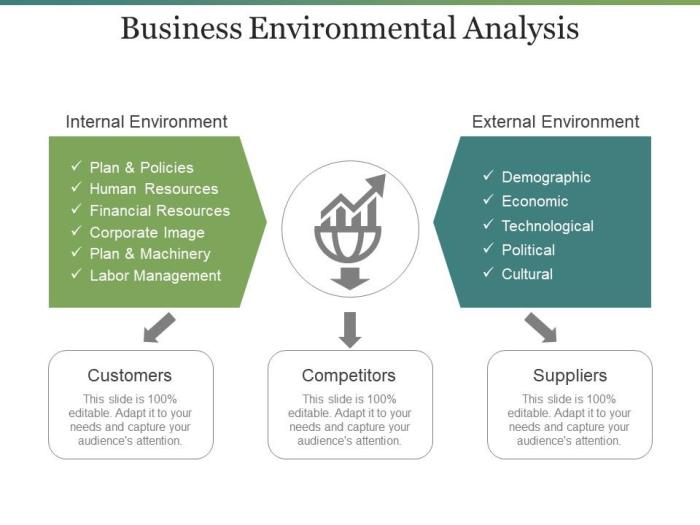
Business environment trends 2025 sets the stage for this enthralling narrative, offering readers a glimpse into a story that is rich in detail with entertaining interactive style and brimming with originality from the outset.
Get ready to dive into the exciting world of business trends and discover how the landscape is evolving in the next few years.
Business Environment Trends 2025

The business environment is constantly evolving, and by 2025, we can expect to see several key emerging trends that will shape the landscape for businesses around the world. One of the most significant factors driving these changes is the rapid advancement of technology, which is revolutionizing how companies operate and interact with their customers.
Technology Advancements
Technology will continue to play a pivotal role in shaping the business environment in 2025. With the rise of artificial intelligence, automation, and data analytics, businesses will be able to streamline their operations, improve efficiency, and make data-driven decisions. Furthermore, the increasing connectivity through the Internet of Things (IoT) will create new opportunities for businesses to innovate and deliver personalized experiences to their customers.
Globalization Impact
Globalization will also have a profound impact on business practices in the upcoming years. As businesses expand into new markets and compete on a global scale, they will need to navigate complex regulatory environments, cultural differences, and geopolitical challenges. Companies that can effectively leverage the opportunities presented by globalization will be able to reach new customers, access talent from around the world, and drive innovation at a faster pace.
Impact of Climate Change

Climate change is a pressing issue that will significantly influence businesses by 2025. Companies across various industries will need to adapt and implement sustainable practices to mitigate the impact of climate change and contribute to environmental preservation.
Examples of Sustainable Practices
- Investing in renewable energy sources such as solar or wind power to reduce carbon emissions.
- Implementing green supply chain management practices to minimize waste and reduce environmental impact.
- Adopting circular economy principles to promote resource efficiency and waste reduction.
- Encouraging telecommuting and remote work options to reduce carbon footprint from commuting.
Importance of Environmental Sustainability
Environmental sustainability is crucial in the future business environment as it not only helps in combatting climate change but also enhances brand reputation, attracts environmentally conscious customers, and fosters innovation and competitiveness.
Technological Advancements
Artificial intelligence (AI) and automation are set to revolutionize business operations by 2025. These technologies will streamline processes, improve efficiency, and enhance decision-making capabilities across various industries.
Role of Artificial Intelligence and Automation
- AI-powered analytics will enable businesses to extract valuable insights from vast amounts of data, leading to more informed strategic decisions.
- Automation of routine tasks will free up human resources to focus on higher-value activities, boosting productivity and innovation.
- AI-driven chatbots and virtual assistants will enhance customer service experiences, providing round-the-clock support and personalized interactions.
Potential Impact of 5G Technology
- 5G technology will significantly increase data transfer speeds and reduce latency, enabling faster communication and real-time collaboration.
- Businesses can leverage 5G networks to enhance remote working capabilities, facilitate IoT connectivity, and support advanced technologies like augmented reality and virtual reality.
- Improved connectivity and network reliability will open up new opportunities for businesses to innovate and deliver seamless digital experiences to customers.
Evolution of Cybersecurity Measures
- With the rise of AI-powered cyber threats, cybersecurity measures will evolve to incorporate machine learning algorithms for proactive threat detection and response.
- Businesses will invest in advanced encryption technologies and multi-factor authentication to safeguard sensitive data and prevent unauthorized access.
- Cybersecurity awareness training for employees will become crucial to mitigate risks associated with social engineering attacks and phishing scams.
Changing Consumer Behavior
Consumer behavior is constantly evolving, influenced by various factors such as technological advancements, societal changes, and economic conditions. By 2025, we can expect to see significant shifts in how consumers make purchasing decisions and interact with businesses.The influence of social media and digital marketing on consumer decision-making will continue to grow. With the rise of platforms like Instagram, TikTok, and YouTube, consumers are increasingly turning to influencers and online reviews to inform their choices.
Businesses will need to adapt their marketing strategies to effectively engage with this digital-savvy audience.
Impact of Social Media
- Social media platforms will play a crucial role in shaping consumer preferences and trends.
- Businesses will need to invest in creating authentic and engaging content to connect with their target audience.
- Online reviews and recommendations will have a significant impact on consumer trust and brand perception.
- Companies that effectively leverage social media influencers will gain a competitive edge in reaching new customers.
Rise of Conscious Consumerism
- Consumers are becoming more environmentally and socially conscious, leading to a rise in conscious consumerism.
- Businesses will need to prioritize sustainability and ethical practices to appeal to this growing segment of the market.
- Transparency in supply chains and corporate social responsibility will be key differentiators for brands in the future.
- Companies that embrace sustainable practices and support social causes will build stronger relationships with consumers.
Closing Notes
As we wrap up our discussion on Business environment trends 2025, it’s evident that the future holds exciting changes and challenges for businesses worldwide. Stay tuned for more updates on how these trends unfold in the coming years.
FAQ Insights
What are some key emerging trends in the business environment by 2025?
Some key emerging trends include increased focus on sustainability, greater integration of technology, and a shift towards more personalized consumer experiences.
How will climate change impact businesses by 2025?
Climate change is expected to drive companies towards more sustainable practices, with a focus on reducing carbon footprint and adopting environmentally friendly policies.
What role will artificial intelligence play in transforming business operations by 2025?
Artificial intelligence is set to streamline processes, enhance decision-making, and drive efficiency in various aspects of business operations, leading to increased productivity.



